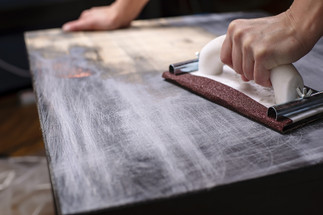Posted by Sandpaper America on Feb 25th 2020
Blog
Drum sanders are large sanding machines that are primarily
used for wood and plastic sanding projects. Coming in at about 30 inches wide
and 25 inches long, and weighing just over 175 pounds, drum s
…
Posted by Sandpaper America on Feb 11th 2020
The Most Common Types of Sandpaper
Sandpaper is a widely used and highly beneficial tool in the
construction, remodeling, and woodworking industries. It comes is a variety of
types, colors, sizes, grades, and more. Sandpaper is a too
…
Posted by Sandpaper America on Jan 6th 2020
A Fool-Proof Guide to Removing Kitchen Tile Backsplash
Kitchen tile backsplash has come a long way in terms of designs
and styles. As these trends continue to evolve, so does the need for homeowners
to replace outdated looks. However, many homeowners, e
…
Posted by Sandpaper America on Oct 18th 2019
Use an Oscillated Spindle Sander for Rounded Wood
When it comes to finishing woodwork with rounded edges, an
oscillated spindle sander is just the tool for the job. Whether sanding down
facings, furniture legs, stair treads, moldings, or other roun
…
Posted by Sandpaper America on Aug 29th 2019
Frequently Asked Questions About Sandpaper
If you are new to the world of abrasives, there is a lot of
information for you to know. But don’t feel overwhelmed; overtime, this
information will come naturally to you during the course of your l
…
Posted by Sandpaper America on Aug 12th 2019
The Sanding Applications of Angle Grinders
When it comes to all the tools in your shop, an angle
grinder is definitely one to have on the shelf. Angle grinders are a multi-use
sanding tool that are compatible with a wide range of wheels and
…





